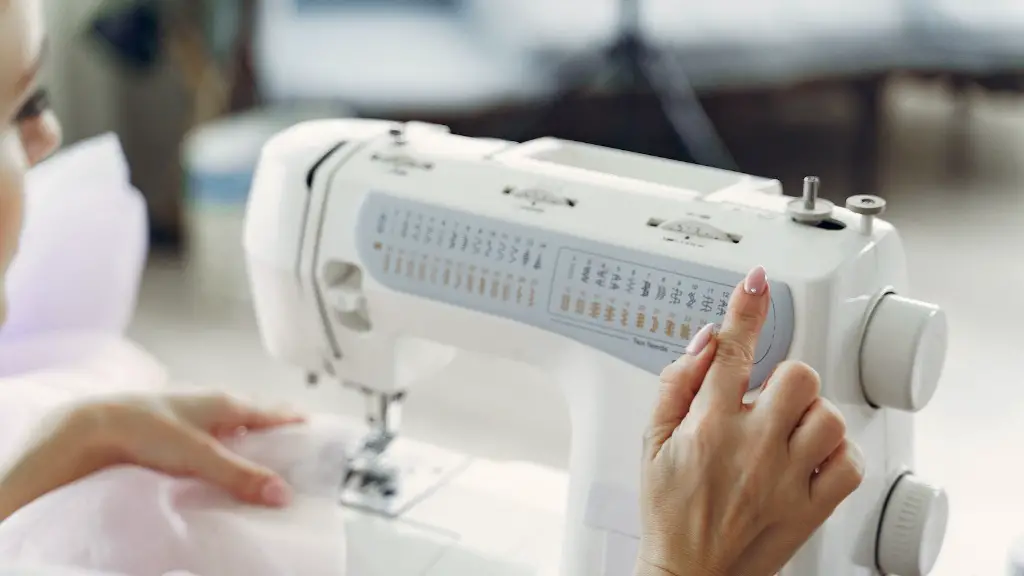Tools Required
Cleaning your Singer 4452 sewing machine requires a few basic items. These include a Phillips screwdriver, a soft brush, a vacuum cleaner and a soft cloth. Depending on the type of work you do, you may also need oil and a lubricant. If you have any questions or doubts, it is always best to refer to the user manual that came with the machine.
A crucial step is to disconnect the sewing machine from all power sources. This means unplugging the power cord and removing any battery. This precaution is necessary for both your safety and the longevity of your machine.
Remove Excess Threads
Once the sewing machine is unplugged, you can begin cleaning. The first step is to remove excess threads from the bobbin area, the needle plate and the pressure foot. This can be done with a small brush or a vacuum cleaner. Make sure to be gentle here, as to not damage any intricate parts.
The bobbin case also needs to be cleaned and inspected for any dirt, lint or thread. If there is any dirt present, use a brush to remove it. Inspect the bobbin case to make sure it is free of damage and is securely in place.
Check Needle and Bobbin Threads
To remove stuck thread and dirt from the needle area you can use a brush and a soft cloth. Make sure to inspect the needle for any damage or wear. If the needle does not appear to be in working order, it is best to replace it. Once the needle and presser foot area are clean, the bobbin threads must be checked. Disconnect the bobbin thread by pulling it out and then rethread it according to the instructions in the user manual.
It is important to ensure that the bobbin thread is correctly threaded and that the tension knob is appropriately set. When the bobbin thread is correctly threaded, it must be drawn up through the needle and into the front of the machine. This will prevent the thread from tangling or jamming the machine.
Oil the Machine and Check All Parts
Using a small amount of oil and a soft cloth, lightly oil all the moving parts on the machine. Make sure to check all the screws and parts for any damage or wear and tear. A good rule of thumb is to replace all parts that appear to be worn out or rusted.
Clean the Machine
Using a soft cloth and mild detergent, wipe down the machine. Also make sure to check for any loose parts or threads that could be causing the machine to malfunction. This is important, as it will ensure the longevity of your machine and its parts.
Lubricate the Moving Parts
Once the machine is clean and all screws have been tightened, you can apply a light lubricant to all moving parts in the machine. This is important in order to maintain the machine’s performance and longevity. Be sure to avoid getting lubricant on the needle, as this can damage the machine.
Put the Machine Back Together
Once the machine has been cleaned and lubricated, it is time to put it back together. Follow the instructions in the user manual and assemble the machine as you would any other sewing machine. Make sure to check every component for damage and wear and tear.
Testing the Machine
Once the machine is put back together, it is time to test it. Connect the power source and turn on the machine. Test the machine on a scrap of fabric to check for any functionality issues. If there are any, refer to the user manual for troubleshooting tips. Make sure to check all the moving parts and make sure they are not too tight or too loose. If everything tests correctly, you can begin sewing with your newly cleaned and lubricated Singer 4452 sewing machine.
Conclusion
In conclusion, cleaning and lubricating your Singer 4452 sewing machine should be done periodically to maintain its performance and to keep it running like new. It requires a few basic items and knowing the right steps to follow. Being familiar with the user manual will help when dealing with delicate parts and potential issues. Regular cleaning and lubrication will extend the life of your machine and will help you avoid costly repairs in the future.



